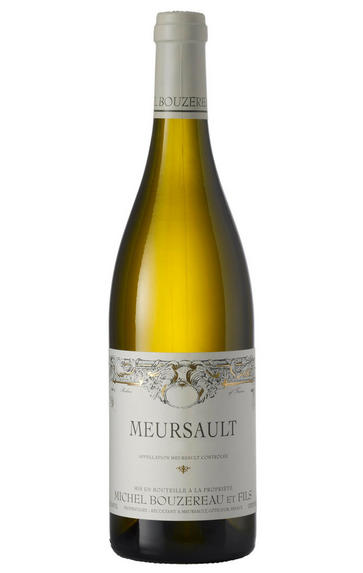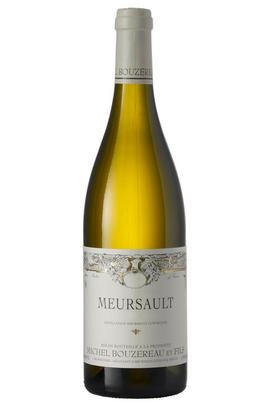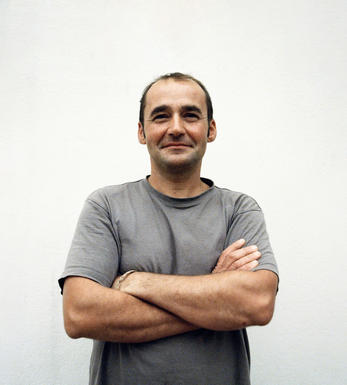
2012 Meursault-Charmes, Les Charmes Dessus, 1er Cru, Michel Bouzereau & Fils, Burgundy

About this WINE

Domaine Michel Bouzereau
The Bouzereau clan is widespread in the village of Meursault, with Domaine Michel Bouzereau at the forefront. Michel Bouzereau comes from a large winemaking family and has held the post of President of the Burgundy Growers Union. His is a voice to be heard. And what he likes to talk about is the traditional way of making wine. He ferments in cask and gives his wines nine months on their lees. Determined that his wines will smell and taste only of wine, the importance of new wood is acknowledged but downplayed. Michel's son Jean Baptiste is now in charge of making the seventeen wines from this 11 hectare estate.
Jean-Baptiste has respected his father's more traditionalist practices but he has instilled a fresher, livelier element to the wines which only enhances their appeal. These wines offer very good value for money and are benchmark examples for each of the crus. They can also age better than could be expected. The whites of this domaine are those most likely to be singled out, with perhaps the Premier Cru of Les Genevrières being the finest.
Their Bourgogne Blanc comes from vineyards which are within the boundaries of Meursault but just outside the appellation. Such generic Burgundies are excellent choices for good value, especially as this wine is treated with the same care, attention and barrel ageing as its more senior brethren.

Meursault
There are more top producers in Meursault than in any other commune of the Côte d’Or. Certainly it is the most famous and popular of the great white appellations. Its wines are typically rich and savoury with nutty, honeyed hints and buttery, vanilla spice from the oak.
Even though it is considerably larger than its southerly neighbours Chassagne and Puligny, Meursault contains no Grands Crus. Its three best Premiers Crus, however – Les Perrières, Les Genevrières and Les Charmes – produce some of the region’s greatest whites: they are full, round and powerful, and age very well. Les Perrières in particular can produce wines of Grand Cru quality, a fact that is often reflected in its price. Meursault has also been one of the driving forces of biodynamic viticulture in the region, as pioneered by Lafon and Leflaive.Many of the vineyards below Premier Cru, known as ‘village’ wines, are also well worth looking at. The growers vinify their different vineyard holdings separately, which rarely happens in Puligny or Chassagne. Such wines can be labelled with the ‘lieu-dit’ vineyard alongside (although in smaller type to) the Meursault name.
Premier Cru Meursault should be enjoyed from five to 15 years of age, although top examples can last even longer. Village wines, meanwhile, are normally at their best from three to 10 years.
Very occasionally, red Meursault is produced with some fine, firm results. The best red Pinot Noir terroir, Les Santenots, is afforded the courtesy title of Volnay Santenots, even though it is actually in Meursault.
- 305 hectares of village Meursault. The best vineyards include Clos de la Barre, Tesson, Chevalières, Rougeot, Narvaux
- 132 hectares of Premier Cru vineyards (17 in all). The finest vineyards include Les Perrières, Les Genevrières and Les Charmes
- Recommended producers: Comte Lafon, Arnaud Ente, Coche Dury, Guy Roulot, Jean-Philippe Fichet, Patrick Javillier, François Jobard, Michel Bouzereau
- Recommended restaurant: Le Chevreuil

Chardonnay
Chardonnay is often seen as the king of white wine grapes and one of the most widely planted in the world It is suited to a wide variety of soils, though it excels in soils with a high limestone content as found in Champagne, Chablis, and the Côte D`Or.
Burgundy is Chardonnay's spiritual home and the best White Burgundies are dry, rich, honeyed wines with marvellous poise, elegance and balance. They are unquestionably the finest dry white wines in the world. Chardonnay plays a crucial role in the Champagne blend, providing structure and finesse, and is the sole grape in Blanc de Blancs.
It is quantitatively important in California and Australia, is widely planted in Chile and South Africa, and is the second most widely planted grape in New Zealand. In warm climates Chardonnay has a tendency to develop very high sugar levels during the final stages of ripening and this can occur at the expense of acidity. Late picking is a common problem and can result in blowsy and flabby wines that lack structure and definition.
Recently in the New World, we have seen a move towards more elegant, better- balanced and less oak-driven Chardonnays, and this is to be welcomed.


Buying options
Add to wishlist
Description
Palish yellow in colour but star bright. It has a very graceful and attractive nose with a touch of fresh butter, perfectly poised, very charming fruit, with real density behind. Crystalline purity allied to weight, makes for a rare and very positive pairing.
Jasper Morris MW, Burgundy Wine Director
Jean-Baptiste Bouzereau began picking on 17th September, the same day as in 2010, and harvested over eight days. Overall the yield was around 30 hl/ha with the lower-lying vineyards such as Bourgogne Blanc and Meursault Genevrières the least affected. Even the badly hailed vines reached maturity and there was no rot to speak of. Indeed, Jean-Baptiste has found the 2012s easy enough to handle once the grapes were picked. All the wines were racked before the new harvest, and those from Tessons upwards have been returned to barrel but with no more new wood.
wine at a glance
Delivery and quality guarantee